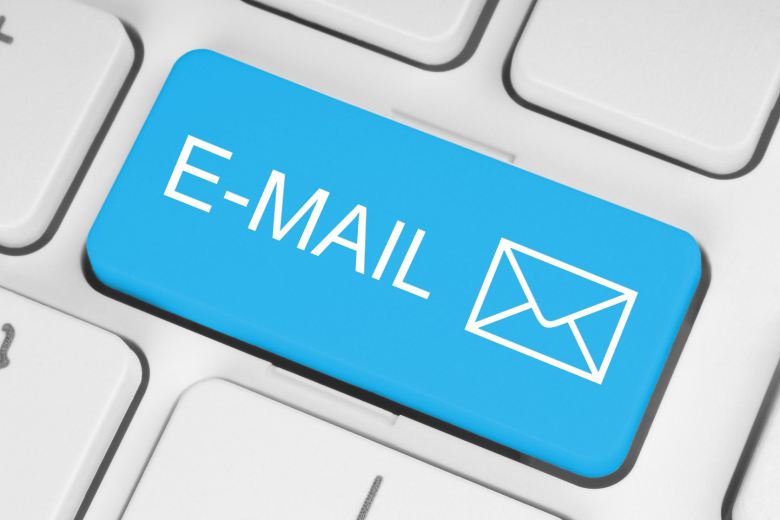5 reasons why you need an email marketing strategy
For those of you that still need convincing, here’s 5 reasons why you need an email marketing strategy:
1. Direction
Your business is be heading in a certain direction, aiming to achieve specific goals and objectives along with your overall marketing plan. But how is your email marketing going to contribute towards achieving the end goal without a plan? Put simply, it’s not. Of course there is a place for ad-hoc activity when something in your business changes last minute, or when a new product becomes available. But having 90% of your email activity on an ad-hoc basis will mean you’ll struggle to know from one minute to the next what you’re trying to communicate, let alone what you’re trying to achieve.
This is where an email strategy comes in to play. A strategy – simply put- is a plan to achieving your goals and objectives. Your strategy will define what email marketing to send, to whom to send it to and when to send it. Marketing research, industry insights and performance analysis of your own marketing campaigns all contribute towards your overarching email strategy.
2. Tactics
‘Tactics without strategy is the noise before defeat’ Sun Tzu (The Art of War).
From working with and talking to many email marketers’, tactics have been primarily the main focus of email activity. However, there should be something that comes before the tactics and that’s strategy. The tactics are then the ‘how’ of achieving your email strategy.
If you don’t have an email strategy how do you know what your tactics are? It would be like buying all of the ingredients to bake a cake but without knowing the cake you were going to make! That’s a recipe for disaster!
Creating a strategy doesn’t have to be a long process. Start with identifying what you are wanting to achieve, then conduct competitor insight, a little industry research and insight analysis into your customers and your almost there towards a strategy. Without the first strategic step in your email marketing process, it’ll be incredibly difficult for you to determine if the tactics you are using are the right ones.
Consulting with brands, I regularly get asked to review why their email activity is no longer working. For example, this could be that email is no longer driving sales. The majority of the time this is due to a lack of strategy, where the email communications has been heavily business focused and not customer focused, without a focus on the long-term plan. Short term tactics have a place but not for 90% of your email activity. With the increasingly busy consumer, now is the time to have a 90% strategically focused email activity and 10% ad-hoc activity.
3. Data
Your email strategy should be about building relationships with your subscriber and customer base. Data will provide the insights into what your subscribers engage with and what they don’t. Understanding the insights of what the data is telling you will ensure that your email marketing is optimised. The only way to do that is by having a clear strategy. Otherwise, you risk gathering insights without a clear direction and ultimately begin drowning in numbers.
Data is one of the biggest challenges facing email marketers, and it’s a big challenge because we gather a lot of data in all of our marketing activity. The essence in gleaning the strategic insight is in identifying what you are wanting to achieve and that will determine the things you need to know about your customers.
For example, it may be that you want to create a triggered email campaign based on the behaviour of your customers. Therefore, you’d need to understand the insights from the behavioural data you’ve been gathering from your customers; what links do they click, what content do they read, how many web pages does your customer visit, where do they go after clicking an email etc? This could then be mapped to what you know about the customer too, what have they told you their interested in from their preference information?Ultimately this then moves more into creating a single customer view. But that again shouldn’t start without a clear strategy of why you want a single customer view and the answers you want it to provide to the questions you have about your customers.
4. Target audience
Trust is key for your email marketing to be successful. Building that trust means you need to be able to create 1:1 communications that are clearly meant for the recipient. This means a move away from the batch and blast approach where you send the same message to everyone and focus on what the recipient wants to receive from you. Understand their interests, their behaviour and why they subscribed to your email marketing. Then with your strategy, use that knowledge to tailor and personalise the experience your recipients have with your brand.
Many brands wonder if it’s worth the time, resource and effort to personalise their email communications and astonishingly 70% of brands don’t personalise their email marketing. But the beauty with email is that you are in control of the messages you send and those messages will last longer than a tweet which disappears in 3 seconds.
Segmentation is your friend to determining the email journeys you provide tailored to specific target audiences.
Your strategy informed by data insights will inform the direction you take rather than it being a guessing game.
5. Performance
Does your email marketing generate the new increased average ROI of £30.01? (DMA UK, 2017). A planned approach to your email marketing, will ensure you’ll be able to identify quickly and easily the areas of your activity that are performing well and the areas that aren’t. Sometimes when I’ve consulted with brands there’s been email marketers that are just looking at the vanity metrics (opens and clicks) for their email performance. Email marketing has much more to offer than a click. Your subscriber base should be a loyal customer base to your business.
The starting point to strategic email measurement is to determine what you want to achieve with your email marketing. Many times, it’s a case of getting an email out but actually what about if you took a step back and not only thought about why you’re sending the email but also what you are trying to achieve by sending that email campaign. Are you trying to get more calls to your contact centre or are you trying to get more downloads of your latest user guide? Whatever the objective is, make sure you set KPIs and are effectively tracking your email campaigns.
It always amazes me how many email marketers aren’t correctly tagging their email campaigns in Google Analytics. If you are tagging it correctly it’s important to check that email as a channel is being correctly attributed.
To summarize the top 5 reasons you need an email marketing strategy are:
1. Direction
2. Tactics
3. Data
4. Target Audience
5. Performance





